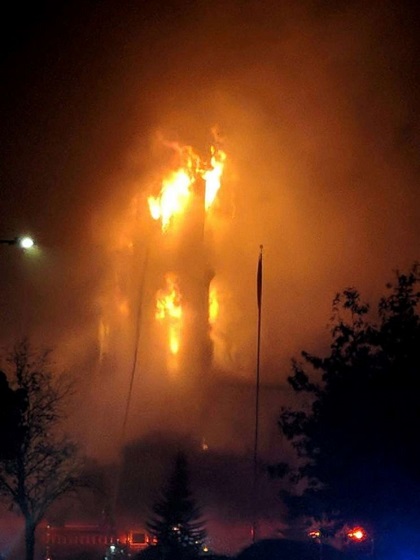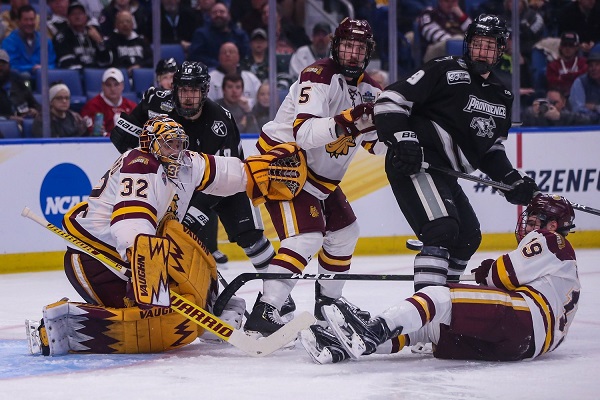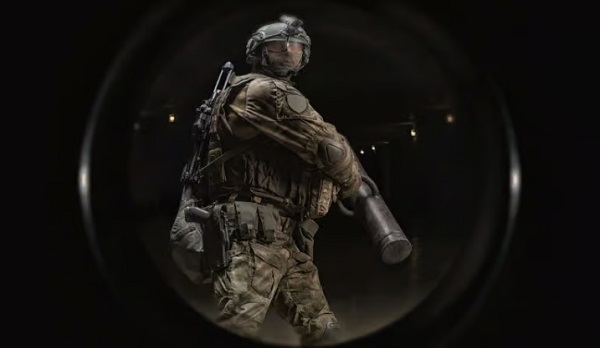Opinion
OPINION: Mayor Veer, Councillors Lee, Johnson, Buchanan and Wong just voted themselves raises totalling $84,955.25

A “PAY RAISE” by any other name is still a “PAY RAISE“.
The Mayor and city council just voted themselves an 18% and 14% pay increase to offset a federal subsidy they enjoyed, unlike the normal taxpayers.
On March 22, 2017 the federal government tabled a budget that would eliminate the 1/3 tax free subsidy to politicians on January 1, 2019.
On October 16, 2017 we had a municipal election where we re-elected Mayor Veer and Councillors Lee, Johnson, Wong, Handley, Wyntjes, and Buchanan. We also elected newcomers Higham and Dawe as councillors.
My point is that they ran, knowing that the subsidy they enjoyed for years would end 14 months after the election. At least Mayor Veer and Councillors Lee, Johnson, Wong,Handley, Wyntjes and Buchanan would have, if not they should have known. Newcomers Councillors Higham and Dawe should have been told by the city.
Good money managers would have prepared for the end of a federal subsidy. We pride ourselves of being more free market and less government hand-out proponents and yet here we are looking for hand outs from the Red Deer taxpayers.
Councillors Higham, Handley and Buchanan wanted to delay this issue and look at the overall compensation package and whether the council position should be deemed a full time position but it failed to pass.
The Mayor broke the tie and voted herself a $19,741.49 pay increase to see her pay rise from $112,198.94 to $131,940.49 because she felt, in my opinion, entitled to her entitlements.
Councillors Lee, Johnson, Buchanan and Wong voted them selves $8,151.72 pay increase to see their pay rise from $60,466.44 to $68,618.16.
Councillors Handley, Wyntjes, Higham and Dawe voted against the raise. Councillor Dawe said that we are and will be asking taxpayers for restraint so felt uncomfortable giving himself a raise.
Councillor Handley thought it could better handled on the expense council side of compensation, Councillor Lee worried about receipts, time and money. Talks about transparencies but would it not be more transparent to reimburse receipted expenses than just giving out $8,151.72 and $19,741.49 pay raises?
I know many people who put in long hours for free out of necessity or a sense of duty. I know people who work fulltime and have 2 other jobs and make less than a councillor, yet they cannot vote themselves a raise to cover the extra bills and taxes imposed on them by this municipal government.
I actually thought that this council would not vote themselves a raise even if ten other councils did. What about the hundreds perhaps thousands of village, town, city councils and public, private and separate school boards, across Canada, dealing with this same issue?
When it comes to making tough decisions involving themselves, I know 5 who couldn’t step up to the plate.
Every household will now have to pay $2 a year more to subsidise 9 fairly well off people.
I know they put in a lot of hours, I know they enjoy the job, but there are so many who work even more hours and make a lot less, but they have no cookie jar to reach in to guarantee their net pay. Probably out of a hundred thousand residents you might find a dozen including these 9 lucky ones.
Enjoy your hand outs. Just saying.
Frontier Centre for Public Policy
It’s Time To Stop Church Arsons And What Fuels Them

From the Frontier Centre for Public Policy
By Lee Harding
Religious freedoms and the right to worship have been a recognized hallmark of civilized societies for centuries. The preamble of Canada’s constitution says our country is built on the principles that acknowledge the supremacy of God and the rule of law. In defiance of both, almost 600 Canadian places of worship have suffered arson in recent years. Nothing could be more unCanadian.
The stats were revealed by Member of Parliament Marc Dalton following a formal inquiry to the federal government. The response showed 592 arsons had been set on places of worship between 2010 and 2022. they rose from 58 in 2020 to 90 in 2021, then down to 74 in 2022.
The peak coincides with claims made in May of 2021 that the remains of 215 school children had been discovered on the site of the former Kamloops Residential School.
Although Prime Minister Justin Trudeau called a subsequent wave of church burnings “unacceptable and wrong” he also called their likely motivations “real and fully understandable.” This hardly doused the flames.
These arsons far outnumber those made on Canadian churches in the 1920s by the Ku Klux Klan, which opposed non-Protestants and non-whites. In those years the KKK desecrated Sarnia’s St. Joseph’s Catholic Church. They killed ten people when they set Saint-Boniface College in Winnipeg on fire. They also burned the Cathedral-Basilica of Notre-Dame de Quebec. In 1926, three Klan members were jailed after they blew up St. Mary’s Roman Catholic Church in Barrie, Ont.
The Klan soon fizzled out, seemingly unlike these recent church burnings. The 110-year-old Notre-Dame-des-Sept-Allégresses Catholic church burned down in Trois-Rivières, Quebec last month, but whether arson was involved has not been confirmed.
The presence of bodies underneath the former residential school in Kamloops has not been confirmed either. A 1924 septic field could also account for soil anomalies found there by ground-penetrating radar. Eight million federal tax dollars spent to investigate the site have yielded no remains and details on how the money was spent are sketchy. It’s high time the site was excavated to confirm or rule out the graves and do autopsies on any corpses found there.
Federal funds also fuel the Canadian Anti-Hate Network (CAHN), the Orwellian title for a group that fuels resentment against socially conservative organizations with negative characterizations. On August 7, CAHN published “40 Ways To Fight The Far-Right: Tactics for Community Activists in Canada” thanks to $640,000 from Ottawa.
“White boys and men make up the majority of people involved in hate-promoting movements,” the handbook explains. Pro-life and pro-parent groups, CAHN says, are among those “characterized by racism, antisemitism, Islamophobia, misogyny, anti-2SLGBTQ+ views, and pro-colonialist/ anti-Indigenous bigotry.”
CAHN says the Catholic-dominated, pro-life organization Campaign Life Coalition is a “hate movement.” Liberty Coalition Canada, a legal defence organization, and the activist organization Action4Canada are similarly denigrated for their alleged belief that Canada was founded on Christian values and attempts to reassert such values.
Meanwhile, the CAHN guide advocates “antifascist” doxing, including infiltration of right-leaning organizations. getting people fired, and ending friendships.
Dalton’s Bill C-411 the “Anti-Arson Act” would do more to deter hate-motivated crimes than CAHN ever will. The legislation would punish those who set fires and explosions at religious places. A first offence would get a mandatory five-year jail sentence, while subsequent offenses would prompt seven years.
When respect for the supremacy of God and the rule of law fail, rights give way to wrongs. It’s time to stop the fires and the disputable claims that fuel them, and restore respect for people of faith, their right to worship, and their places of worship.
Lee Harding is a Research Associate for the Frontier Centre for Public Policy.
Bruce Dowbiggin
CHL Vs NCAA: Finally Some Sanity For Hockey Families

In forty-years-plus of covering sports you develop hobby horses. Issues that re-appear continuously over time. In our case, one of those issues has been pro hockey’s development model and the NCAA’s draconian rules for its participants. Which was better, and why couldn’t the sides reach a more reasonable model?
In the case of hockey the NCAA’s ban on any player who played a single game in the Canadian Hockey League created a harsh dilemma for hockey prodigies in Canada and the U.S. Throw your lot in with the CHL, hoping to be drafted by the NHL, or play in a secondary league like the USHL till you were eligible for the NCAA. Prospects in the CHL’s three leagues — the OHL, QMJHL and WHL —were classified as professional by the NCAA because they get $600 a month for living expenses, losing Division I eligibility after 48 hours of training camp. The stipend isn’t considered income for personal tax purposes.”
Over the decades we’ve spoken with many parents and players trying to parse this equation. It was a heartbreaking scene when they gambled on a CHL career that gave them no life skills or education. Or the promised NCAA golden goose never appeared after playing in a lower league for prime development years.
There were tradeoffs. NCAA teams played fewer games, CHL teams played a pro-like schedule. The NCAA awarded scholarships (which could be withdrawn) while the CHL created scholarships for after a career in the league (rules that players getting NHL contracts lost those scholarships has been withdrawn). There were more contrasts.
As we wrote here in 2021, it might have stayed this way but for a tsunami created by the antitrust issue of Name Image Likeness for NCAA players who were not paid for the use of their NIL. When the U.S. Supreme Court ruled on the issue in 2015 it warned the NCAA that its shamateurism scheme had to change. That created revolution in the NCAA. Athletes now receive healthy compensation for their image in video and digital products. They can also take million-dollar compensation from sponsors and boosters.
Portals allow them to skip from team to team to find millions in compensation. One of the many changes in the new NCAA was its prohibition against CHL players. To forestall future lawsuits costing millions, it recently made hockey players eligible for the same revenues as football and basketball players. Now the NCAA has voted to open up college hockey eligibility to CHL players effective Aug. 1, 2025, paving the way for major junior players to participate in the 2025-26 men’s college hockey season.
Which, we wrote in 2022, would leave hockey’s development model vulnerable. “As one insider told us, “The CHL model should be disrupted. Archaic and abusive.” NIL won’t kill the CHL but it could strip away a significant portion of its older stars who choose guaranteed money over long bus rides and billeting with other players. It’s early days, of course, but be prepared for an NHL No. 1 draft pick being a millionaire before his name is even called in the draft.”

As we wrote in May of 2022 “A Connor McDavid could sign an NIL styled contract at 16 years old, play in the NCAA and— rich already— still be drafted No. 1 overall. Yes, college hockey has a lower profile and fewer opportunities for endorsements. Some will want the CHL’s experience. But a McDavid-type player would be a prize catch for an equipment company or a video game manufacturer. Or even as an influencer. All things currently not allowed in the CHL.”
Effectively the CHL will get all or most of the top prospects at ages 16-19. After that age prospects drafted or undrafted can migrate to the NCAA model. Whether they can sign NHL contracts upon drafting and still play in the NCAA is unclear at this moment. (“On the positive side, we will get all the top young players coming to the CHL because we’re the best development option at that age,” one WHL general manager told The Athleltic’s Scott Wheeler.

One OHL GM told the Athletic “As the trend increases with American players looking for guarantees to sign, does a CHL player turn down an opportunity to sign at the end of their 19-year-old year with the hopes that a year at 20 in NCAA as a free agent gives them a better route to the NHL?”
The permutations are endless at the moment. But, at least, players and their families have a choice between hockey and education that was forbidden in the past. Plus, they can make money via NIL to allow them to stay for an extra year of development or education. The CHL will take a hit, but most young Canadian players will still see it as the logical launching pad to the NHL.
Now, for once, families can come first on the cold, nasty climb to the top hockey’s greasy pole.
Bruce Dowbiggin @dowbboy is the editor of Not The Public Broadcaster A two-time winner of the Gemini Award as Canada’s top television sports broadcaster, he’s a regular contributor to Sirius XM Canada Talks Ch. 167. His new book Deal With It: The Trades That Stunned The NHL And Changed hockey is now available on Amazon. Inexact Science: The Six Most Compelling Draft Years In NHL History, his previous book with his son Evan, was voted the seventh-best professional hockey book of all time by bookauthority.org . His 2004 book Money Players was voted sixth best on the same list, and is available via brucedowbigginbooks.ca.
-

 Brownstone Institute8 hours ago
Brownstone Institute8 hours agoThe Most Devastating Report So Far
-

 Economy20 hours ago
Economy20 hours agoCOP 29 leaders demand over a $1 trillion a year in climate reparations from ‘wealthy’ nations. They don’t deserve a nickel.
-

 Censorship Industrial Complex12 hours ago
Censorship Industrial Complex12 hours agoAnother Mass Grave?
-

 Alberta18 hours ago
Alberta18 hours agoOn gender, Alberta is following the science
-

 Alberta11 hours ago
Alberta11 hours agoMAiD In Alberta: Province surveying Albertans about assisted suicide policies
-

 Energy19 hours ago
Energy19 hours agoOttawa’s proposed emission cap lacks any solid scientific or economic rationale
-

 Bruce Dowbiggin7 hours ago
Bruce Dowbiggin7 hours agoCHL Vs NCAA: Finally Some Sanity For Hockey Families
-

 Brownstone Institute2 days ago
Brownstone Institute2 days agoFirst Amendment Blues


